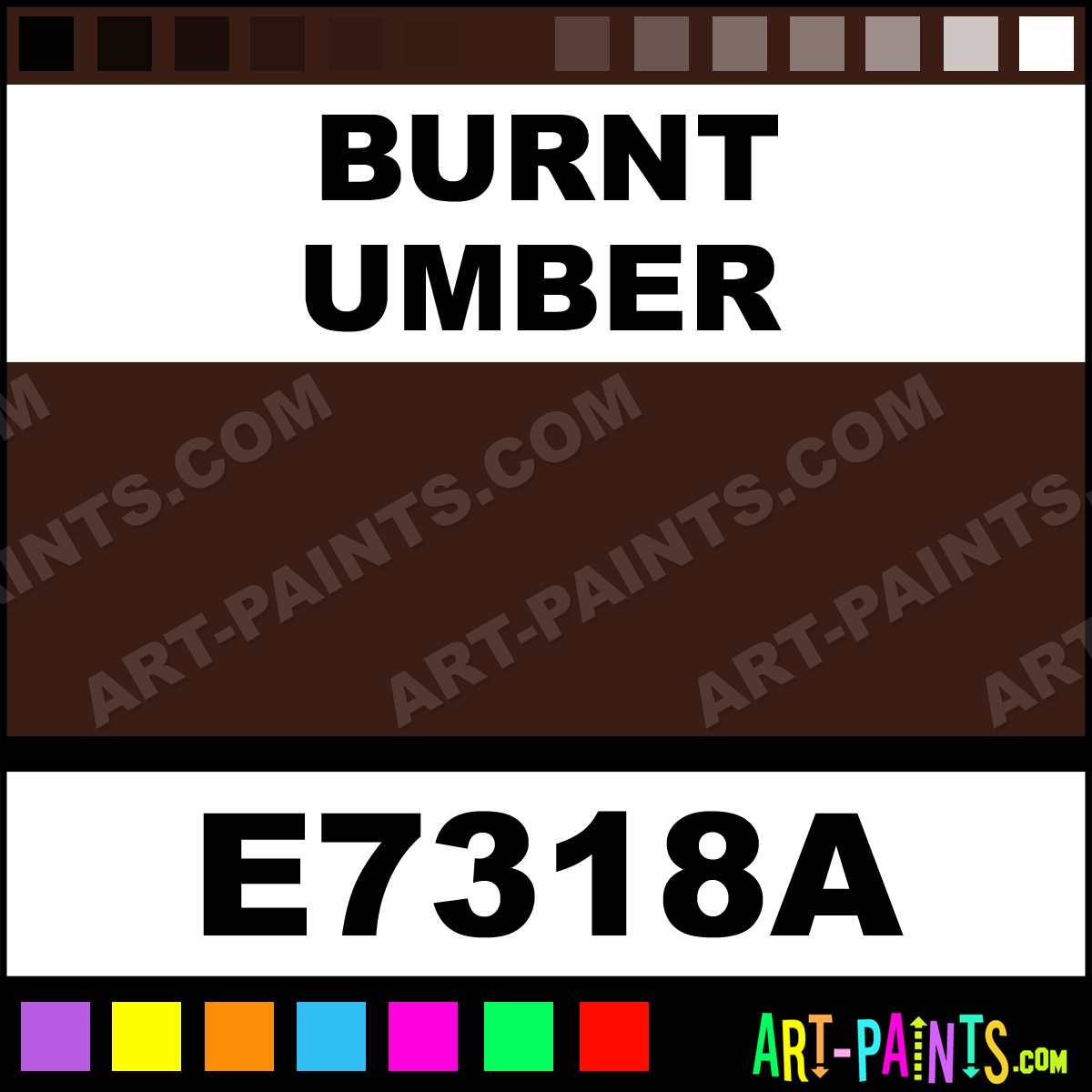Burnt Umber: The Versatile Pigment That Adds Depth And Warmth To Your Art
Burnt umber is a fascinating natural pigment that has been used by artists for centuries. Its rich, warm brown tones add depth and character to paintings, drawings, and various art forms. As one of the most versatile pigments in the artist's palette, burnt umber continues to captivate creatives around the world.
Beyond its aesthetic appeal, burnt umber plays a crucial role in color theory and art techniques. Its unique properties make it an essential tool for artists who want to create realistic shadows, lifelike skin tones, and dynamic compositions. Understanding this pigment's characteristics and applications can significantly enhance your artistic skills.
In this comprehensive guide, we'll explore everything you need to know about burnt umber – from its origins and chemical composition to its practical applications in art. Whether you're a professional artist or an art enthusiast, this article will provide valuable insights into this remarkable pigment's world.
Table of Contents
- The Origin and History of Burnt Umber
- Chemical Composition and Properties
- Types of Burnt Umber
- Applications in Art
- Techniques Using Burnt Umber
- Burnt Umber vs Other Browns
- Mixing Burnt Umber with Other Colors
- Where to Purchase High-Quality Burnt Umber
- Care and Storage Tips
- Frequently Asked Questions
The Origin and History of Burnt Umber
Burnt umber's journey through history reveals its significance in art development. Originating from natural earth pigments, burnt umber has been used since prehistoric times. The pigment is derived from natural umber, which is heated to produce its characteristic warm brown tones.
Historical Usage Across Cultures
- Used by Renaissance masters for creating realistic shadows
- Popular in Baroque art for its versatility
- Essential in Impressionist paintings for color mixing
Art historians have traced burnt umber's usage back to ancient civilizations, where it was prized for its permanence and rich color. Its enduring popularity stems from its ability to complement other colors while maintaining its own distinct character.
Chemical Composition and Properties
The chemical makeup of burnt umber determines its unique properties. Composed primarily of iron oxide and manganese oxide, this pigment exhibits excellent lightfastness and permanence.
Key Characteristics
- High opacity
- Warm undertones
- Excellent mixing properties
According to scientific studies, burnt umber's chemical structure remains stable under various conditions, making it a reliable choice for both oil and water-based mediums. This stability ensures that artworks created with burnt umber maintain their original vibrancy over time.
Types of Burnt Umber
Not all burnt umber pigments are created equal. Artists can choose from several variations based on their specific needs:
Natural vs Synthetic Burnt Umber
- Natural burnt umber - derived from earth pigments
- Synthetic burnt umber - manufactured through chemical processes
Each type offers distinct advantages, with natural burnt umber prized for its authentic earthy tones, while synthetic versions provide consistent coloration and purity. Artists should consider their medium and desired effect when selecting the appropriate type.
Applications in Art
Burnt umber finds extensive use across various artistic disciplines. Its versatility makes it indispensable for artists working in different mediums:
Popular Uses
- Creating realistic shadows in portraits
- Developing depth in landscape paintings
- Adding warmth to still-life compositions
Art educators recommend burnt umber as a foundational color for beginners due to its adaptability and ease of use. Professional artists appreciate its ability to enhance complex color schemes while maintaining harmony within the composition.
Techniques Using Burnt Umber
Mastery of specific techniques can significantly enhance an artist's ability to utilize burnt umber effectively:
Essential Techniques
- Glazing for transparent effects
- Scumbling for textured surfaces
- Underpainting for foundational layers
These techniques allow artists to explore burnt umber's full potential, creating dynamic and visually appealing artworks. By understanding these methods, artists can achieve professional-level results in their creations.
Burnt Umber vs Other Browns
While many brown pigments exist, burnt umber stands out due to its unique characteristics:
Key Differences
- Warmer undertones compared to raw umber
- Greater opacity than sepia
- More versatile than burnt sienna
Color theory experts emphasize burnt umber's ability to bridge the gap between cool and warm tones, making it an invaluable addition to any artist's palette. Its balanced properties enable artists to create harmonious color transitions seamlessly.
Mixing Burnt Umber with Other Colors
The true magic of burnt umber lies in its mixing capabilities:
Common Color Combinations
- With white - creates warm beige tones
- With blue - produces deep shadow hues
- With yellow - develops rich ochre shades
Color mixing experiments have shown that burnt umber's warm undertones enhance the vibrancy of other pigments while maintaining color harmony. This makes it an essential tool for color theory applications in both traditional and digital art forms.
Where to Purchase High-Quality Burnt Umber
When selecting burnt umber, quality matters. Reputable art supply stores and online retailers offer a range of options:
Recommended Sources
- Local art supply stores
- Specialty pigment suppliers
- Verified online retailers
Artists should look for products certified by professional organizations to ensure pigment quality and safety standards. Purchasing from trusted sources guarantees consistent performance and longevity of the pigment.
Care and Storage Tips
Proper care and storage preserve burnt umber's quality:
Maintenance Guidelines
- Store in airtight containers
- Keep away from direct sunlight
- Handle with clean tools
Following these guidelines ensures that burnt umber maintains its optimal performance characteristics over time. Artists who invest in proper care and storage will enjoy consistent results in their work.
Frequently Asked Questions
Here are answers to common questions about burnt umber:
FAQ Section
- Can burnt umber be used in digital art? Yes, through digital color matching.
- What makes burnt umber different from raw umber? The heating process creates warmer tones.
- Is burnt umber suitable for beginners? Absolutely, due to its versatility and ease of use.
Conclusion
In summary, burnt umber represents an essential pigment in the artist's toolkit. Its rich history, versatile applications, and unique properties make it an invaluable resource for creatives across disciplines. By understanding its origins, chemical composition, and practical applications, artists can harness its full potential to elevate their work.
We invite you to explore more about burnt umber and its applications. Share your experiences and techniques in the comments below, and consider exploring our other articles on art materials and techniques. Together, we can continue to deepen our understanding and appreciation of this remarkable pigment's world.

The Warmth and Depth of Burnt Umber A Guide to this Earthy Hue HipFonts

2732x2732 Burnt Umber Solid Color Background

Burnt Umber Professional Gouache Paints E7318A Burnt Umber Paint